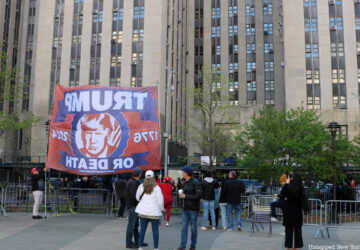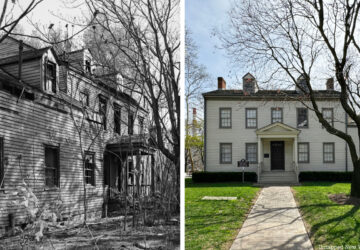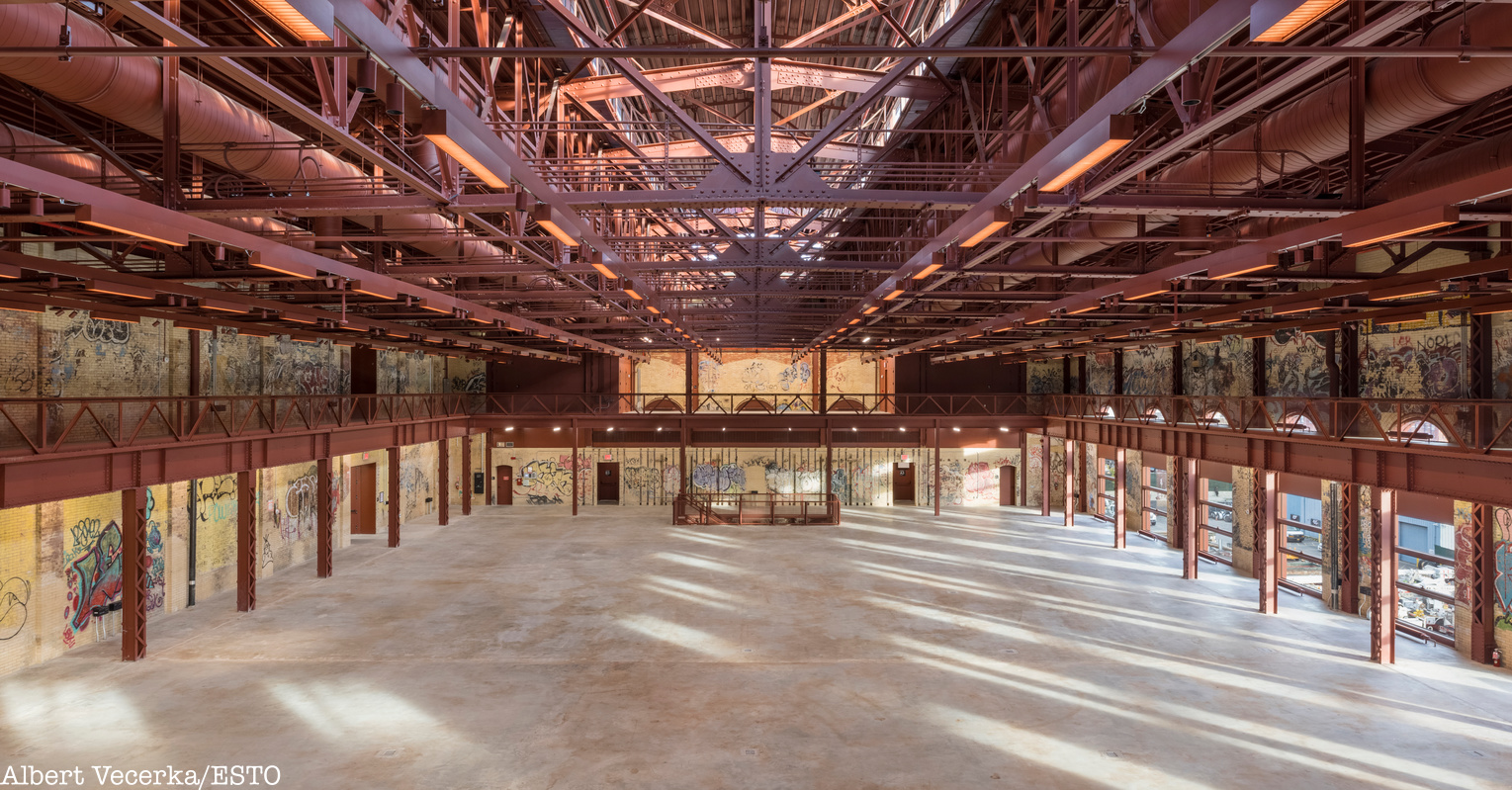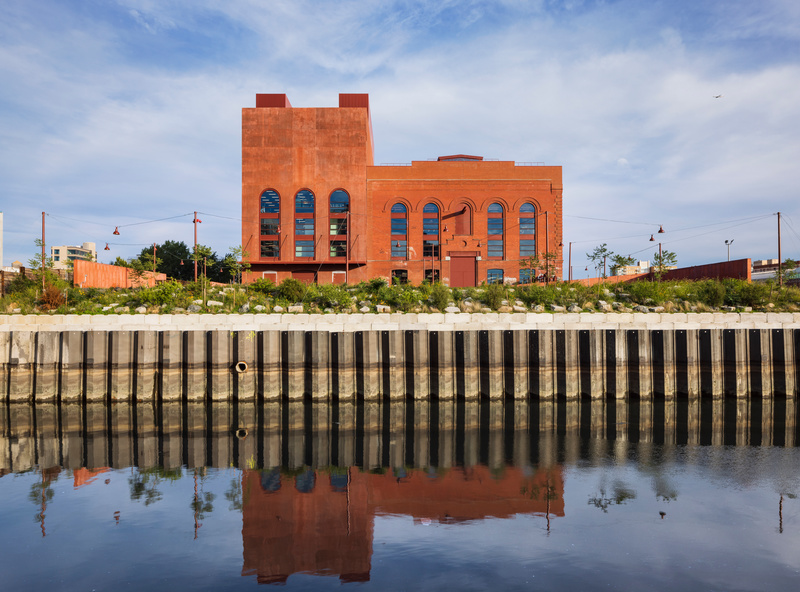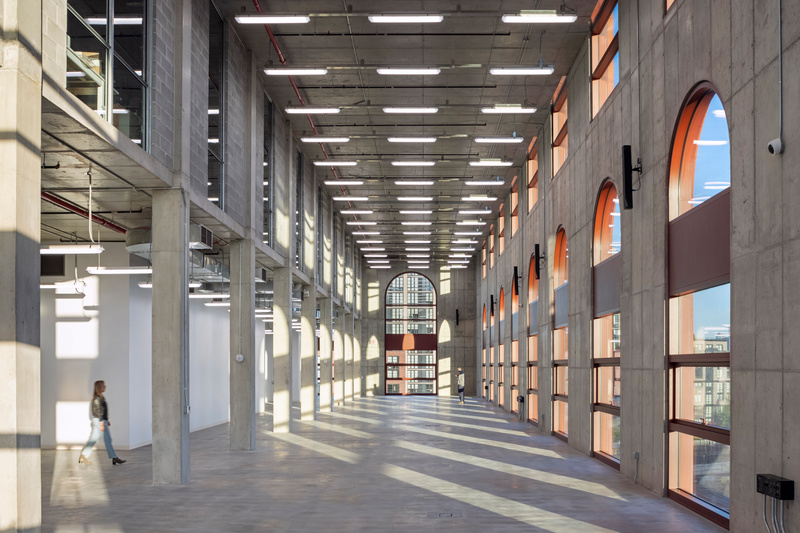After a five-year, $180 million renovation, the formerly abandoned BRT power station on the shores of the Gowanus Canal has transformed from a dilapidated squatters residence to a state-of-the-art production facility for artists. Despite its clear new widows, cleaned-up brick facade, and airy, light-filled spaces, the building does retain reminders of its grimier past. On a custom-made private tour for Untapped New York Insiders, you can learn about the building’s dramatic transformation and see what remains from its former lives!
This tour on May 4th is $15 for Untapped New York Insiders. 100% of the ticket price goes directly to Powerhouse Arts. Not an Insider yet? Become a member today with promo code JOINUS and get your first month free!
Known today as Powerhouse Arts, this Gowanus landmark was originally built as a subway power station for the rapidly expanding Brooklyn Rapid Transit system. Architect Thomas Edward Murray designed the 8-story brick building, completed in 1904. The power station was decommissioned in the 1950s and partially demolished.
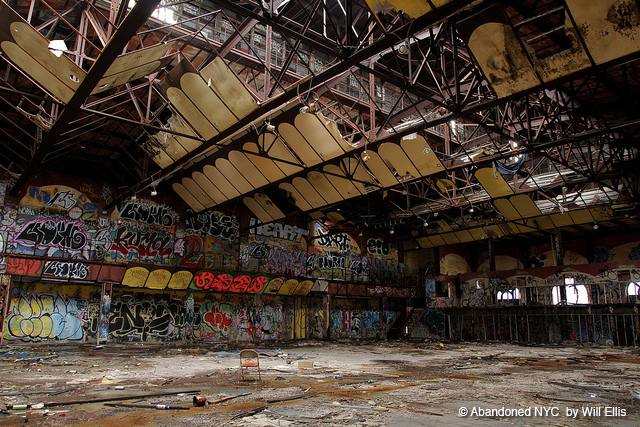
Over the ensuing decades, the abandoned structure sat unused and decaying. Half of the structure, the boiler house, was demolished. The remaining structure, the cavernous turbine hall which once housed machinery to power above-ground trains, became a gallery of graffiti art.
In the 2000s, the derelict structure became known as the Batcave. The first group of squatters to arrive at the building were peaceful runaways. However, as word got out and the community grew, hard drugs made their way into the space. Raucous raves, overdoses, and outbreaks of violence became regular occurrences. The squatters were evicted in 2006.
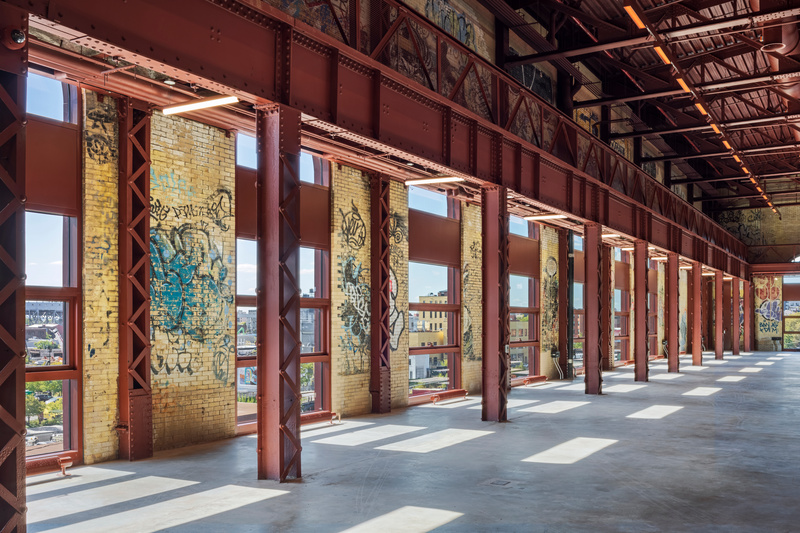
Despite the violence and crime that came later, the site has long been a haven for artists. The legacy of art is what Powerhouse has preserved. Inside the Turbine Hall today, the iconic uppermost floor has been transformed into the “Grand Hall,” a forum for multi-use and public programming. The walls of the hall still display colorful yet fading pieces of graffiti that have been there for years.
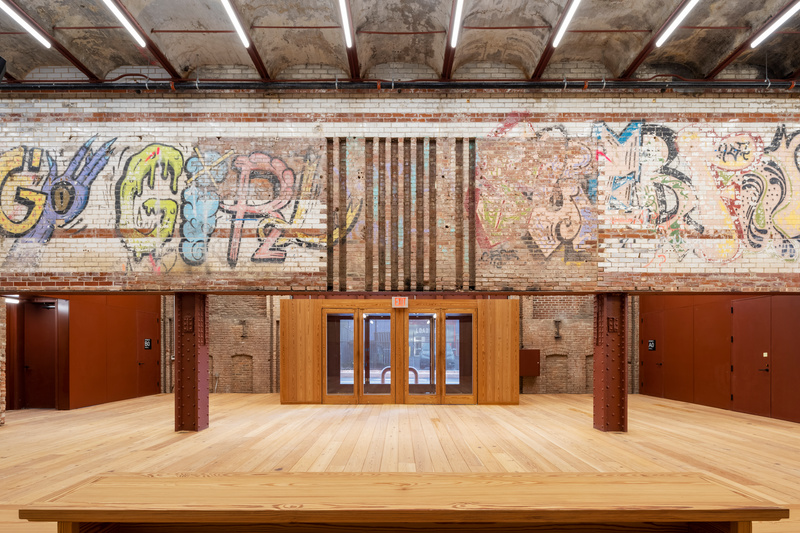
In addition to the preserved graffiti that has been incorporated into the new design, there is also a new commission. Brooklyn-born, New Orleans-based artist Ellery Neon painted a mural titled Flying Home. Neon lived in the Batcave with friends from 2002-2004. He returned frequently to host parties and add more murals to interior and exterior of the building. The new mural at Powerhouse Arts depicts a pigeon in flight and pays homage to another mural Neon created. Neon’s “You Go Girl” mural, which was created when the building was abandoned, has been preserved and is on display in the lobby.
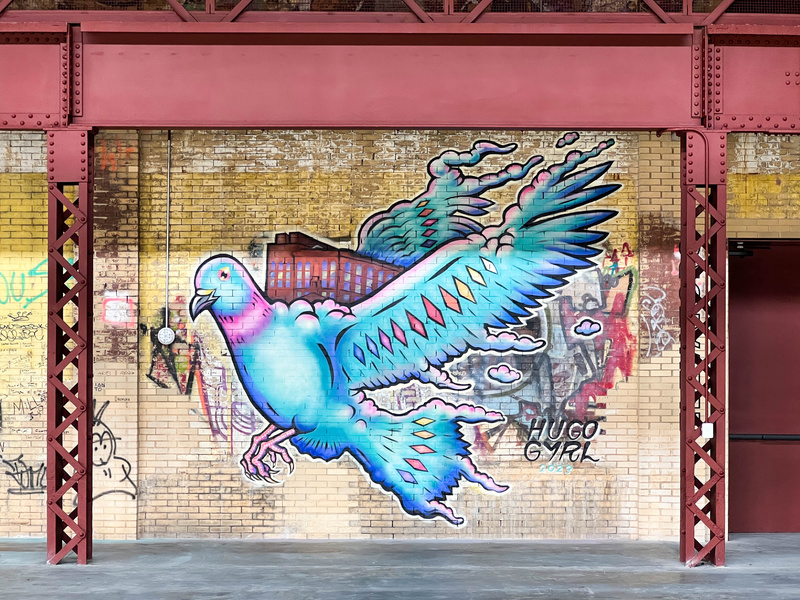
While the Grand Hall is an impressive space, even more impressive things are happening in the fabrication workshops where artists bring their work to life. These facilities take up 170,000 square feet of space inside the reconstructed boiler house. Studios for print, ceramic, and public art fabrication are available. Artists like the late Faith Ringold, Michael Joo, and Pamela Council have all produced work from inside Powerhouse Arts.
Join Untapped New York Insiders for a peek inside these workshops to see what’s being made!
You can own a piece of Powerhouse Arts produced work and help fund the organization’s mission by purchasing a print through the Print Publishing Program. A diverse range of artists will produce an edition of approximately 30-50 prints, ranging in price. Half the proceeds of print sales will go to the artist, while the other half will be redirected back into the Printshop.
On June 15th, Powerhouse Arts will host a Community Day where members of the public can take part in hands-on workshops, demonstrations, screenings, and conversations. Visitors can make their own works of art and enjoy live performances while exploring the space. You can learn more and RSVP here.
Next, check out more photos from when Powerhouse Arts was the Batcave!
